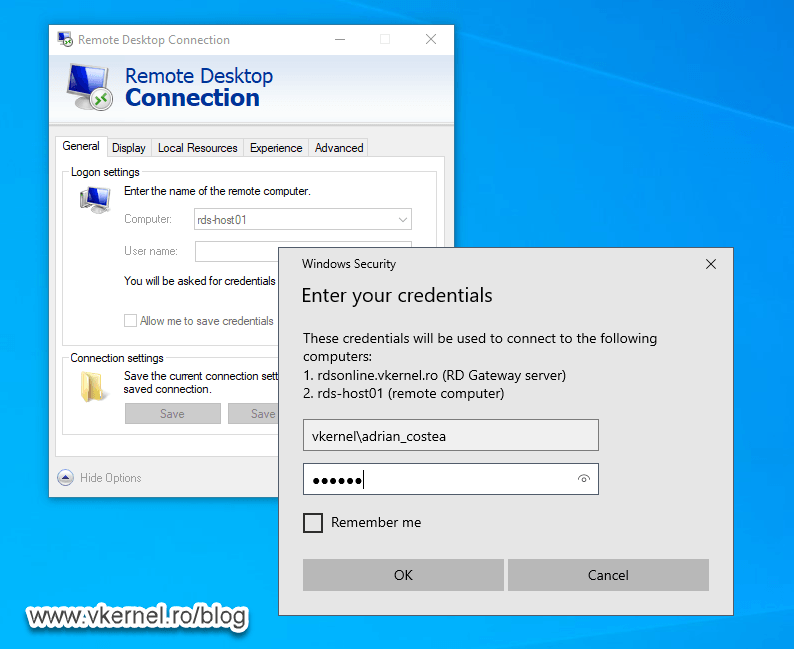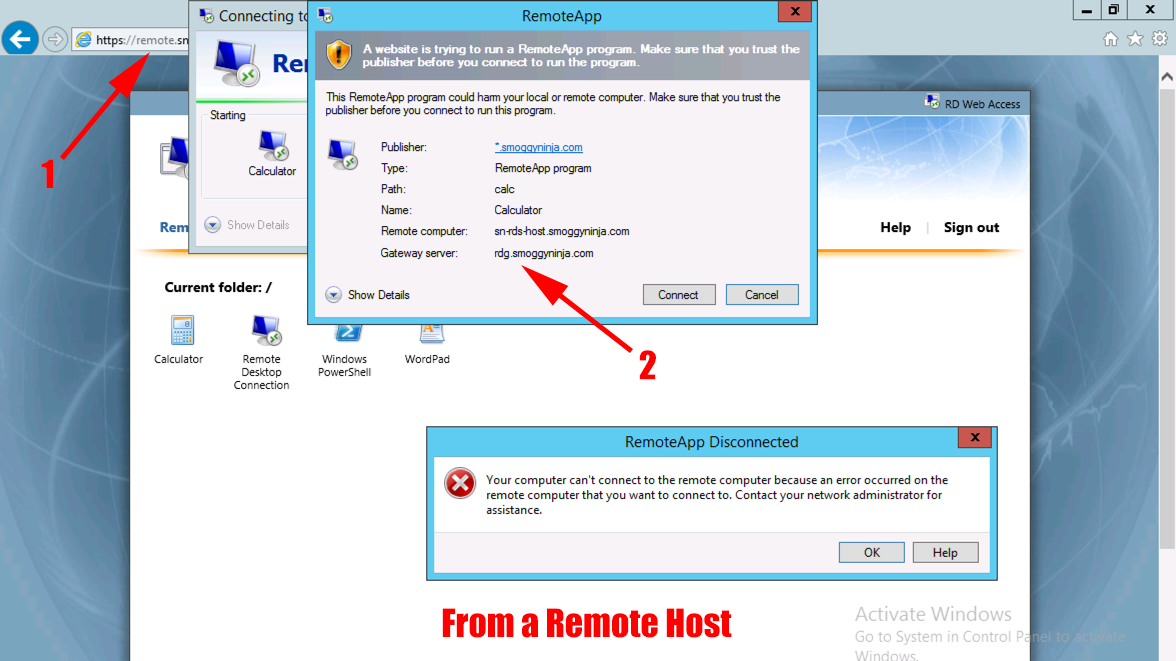

- #How to access my windows server 2012 remote desktop web update#
- #How to access my windows server 2012 remote desktop web manual#
- #How to access my windows server 2012 remote desktop web full#
- #How to access my windows server 2012 remote desktop web software#
- #How to access my windows server 2012 remote desktop web windows 7#
(Although the Web Feed URL does have a periodic update schedule).
#How to access my windows server 2012 remote desktop web manual#
The downside of manual distribution is obviously the fact that a change to any of the Remote Apps would again have to be manually distributed to the end users, whereas, using RD Web Access or the Web Feed URL would automatically update this.
#How to access my windows server 2012 remote desktop web software#
GPO, SCCM or any other software distribution mechanism. You could then distribute that to your users using several different techniques like e.g. MSI file inside C:\Program Files\Packaged Programs. For example, you would be able to place them on the end users’ Desktop and/or Start Menu.įigure 7: Remote App Manager manual distribution optionsįinishing the wizard would result in an. Furthermore, you would have the option to configure where you would like to place shortcuts to the.

RDP files upon installation, and also configure the destination RD Session Host Server as well as the RD Gateway and certificate settings. Using this wizard, we would be able to set the path where we would like to store the. Then, there was also the ability to create a Windows Installer Package. by using GPO) distribute to your end users. RDP file, which you could then manually (or e.g. This would simply get all the parameters needed to successfully launch the Remote App and create an. Right-clicking a Remote App in the Remote App manager showed two distribution options.įigure 6: Remote App Manager manual distribution options The third option to distribute Remote Apps to end users was by making use of the manual distribution options in the Remote App Manager. RDP files stored in the users roaming profile.įigure 5: Remote App inside the Start Menu These Remote Apps and Desktops would become available in the users local Start Menu. Doing so would create several shortcuts to the Remote Apps and Desktops that were assigned to that user.įigure 4: Remote App assignment confirmation This URL would point back to the server running the RD Web Access role. Here, you had the option to enter a so called Web Feed URL.
#How to access my windows server 2012 remote desktop web windows 7#
Opening the Control Panel item called “RemoteApp and Desktop Connection” resulted in the screen below.įigure 3: Remote App and Desktop Connections – Windows 7 That would result in the Remote App being available to the assigned users in RD Web Access.ĭistribute using Web Feed URL in the control panelĪnother way to distribute the Remote Apps was by using the Control Panel on the client. This could be done by selecting the option “RemoteApp program is available through RD Web Access”, which could be done on a per Remote App level. One of the ways to distribute a Remote App to the end users was to make it available in RD Web Access. In addition, you were also able to add a parameter if needed, and use the User Assignment tab to publish the Remote App to a specific group of people. For example, the location, path and name could be changed. After initially creating a new Remote App, additional settings could be configured per Remote App by editing its properties. Using the App Remote App Program wizard, an application running on this RD Session Host Server can be published as Remote App, meaning users are able to launch that application as a Remote App. Using the Remote App Manager, Remote Apps are initially created and updated. This is a MMC snap-in available on a server running the RD Session Host role and is launched from the Administrative Tools sections of the Start menu. In Windows Server 2008, and later R2, Remote Apps are managed using the Remote App Manager.
#How to access my windows server 2012 remote desktop web full#
The key difference here is the fact that a full desktop session uses Explorer.exe and Userinit.exe, and Remote App sessions use Rpdshell.exe and Rdpinit.exe. Therefore a Remote App does not use a full desktop session on the RD Session Host server serving a user session. As you will probably know, a Remote App is an application that runs seamlessly next to other local applications on the end-users desktop. Remote Apps have been around since Windows Server 2008.

Let us first take a look at what the situation was before Windows Server 2012. In this article, we’ll discuss what has changed, what the consequences of those changes are compared to Windows Server 2008 R2, what’s possible with Windows Server 2012, and what’s not.ĭistributing Remote Apps and Desktops with Windows Server 2008 R2 In this article, we’ll take a look at a common action while using Remote Desktop Services in Windows Server 2012, which is the distribution of Remote Apps and Desktops. Windows Server 2012 has been improved in many different areas, Remote Desktop Services being one of them. With the Release To Manufacturing (RTM) version of Windows Server 2012 being available (September 4th) many people have been test-driving Windows Server 2012, or will do so in the near future.


 0 kommentar(er)
0 kommentar(er)
